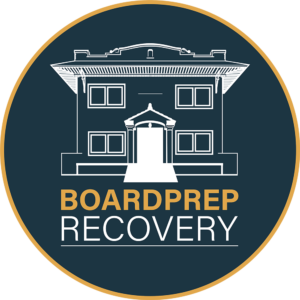Addiction is a Complex, But Treatable Disease – 6 Principles of Effective Treatment
For those struggling with a substance use disorder (a.k.a. addiction to alcohol and/or drugs), seeking treatment can at times seem like a daunting, even overwhelming task. This is especially true when it comes to finding a well-established treatment center that you can rely upon to help you with getting your particular recovery needs met.
Recognizing addiction is a complex disease—in that it negatively affects multiple areas of a person’s life—it only makes sense that effective treatment would capably address each of the dimensions addiction disrupts, including treatment of the specifics of one’s chemical dependency, as well as its effects on the physical, emotional, mental and spiritual aspects of a person, in addiction to any of one’s social, vocational and/or legal troubles. It should also be noted effective treatment be appropriate to a person’s age, gender, ethnicity and culture.
In 2018, the National Institute on Drug Abuse (NIDA) put out a publication focusing on the constituent principles that research has determined make up the most successful treatment approaches.[1]
If you’re searching for a treatment center to provide you with the support necessary to help you recover from a substance use disorder, here are 6 principles to look for in a treatment center – that is, the facility should demonstrate they’re adhering to these principles in their policies, protocols and therapeutic practices:
1. Ensuring you stay in treatment for a sufficient period of time is essential.
According to NIDA’s published guide, “The appropriate duration for an individual depends on the type and degree of the patient’s problems and needs. Research indicates that most addicted individuals need at least 3 months in treatment to significantly reduce or stop their drug use and that the best outcomes occur with longer durations of treatment.”[2] Since those in treatment sometimes leave before their entire agreed-upon program is completed, the most effective programs have in place strategies to engage and keep a patient in treatment.
2. Behavioral therapies—including individual, family, or group counseling—are the modalities of addiction treatment most commonly and successfully used.
While therapeutic approaches may vary in their particular focus, the most successful ones involve modalities that address “a patient’s motivation to change, providing incentives for abstinence, building skills to resist drug use, replacing drug-using activities with constructive and rewarding activities, improving problem-solving skills, and facilitating better interpersonal relationships.”[3] Further, once a patient has finished his or her treatment program, maintaining one’s sobriety going forward is encouraged in the form of participation in peer support programs and ongoing group therapy, where indicated.
3. Oftentimes patients require and benefit greatly from medications as an essential part of their treatment, particularly in combination with therapeutic counseling and other behavioral therapies.
Methadone, buprenorphine and naltrexone are a few examples of effective prescribed medicines that have been shown to help those addicted to opiates and opioids. Similarly, acamprosate, disulfiram and naltrexone have been successfully used for treating alcohol addiction.
4. Since a person’s needs while in treatment may change through the course of the program, their treatment and services plan must be assessed continually and modified as necessary to ensure their treatment and recovery requirements are being met.
Some of the program components that may need adjustments during a patient’s treatment include their “counseling or psychotherapy, medication, medical services, family therapy, parenting instruction, vocational rehabilitation, and/or social and legal services.”[4]
5. Co-occurring drug and mental health disorders need to be simultaneously addressed.
Many of those who enter treatment for a substance use disorder also have other mental disorders. Patients who demonstrate upon intake one condition should be assessed for any others, and when found, the treatment protocol developed by the staff should address both (or all) concurrently, including the use of appropriate medications.
6. Medically assisted detoxification should be provided, whenever indicated, but what needs emphasizing is it’s only the first stage of addiction treatment and by itself is not adequate for long-term sobriety.
Although medically-assisted detoxification can help safely manage the oftentimes intense, uncomfortable physical symptoms of withdrawal and be a good stepping-stone forward for effective addiction treatment and long-term recovery, detox alone is very seldom sufficient to help someone achieve life-long sobriety. At an effective treatment program, “patients should be encouraged to continue drug treatment following detoxification. Motivational enhancement and incentive strategies, begun at initial patient intake, can improve treatment engagement.”[5]
In summary, while identifying an appropriate treatment center to meet your needs may not be easy, those that follow the principles outlines above are much more likely to provide such than those that don’t.
[1] “NIDA. “Principles of Drug Addiction Treatment: A Research-Based Guide.” 2018
[2] Ibid.
[3] Ibid.
[4] Ibid.
[5] Ibid.







